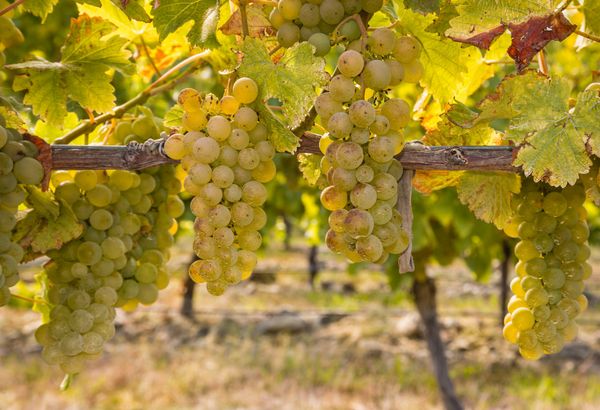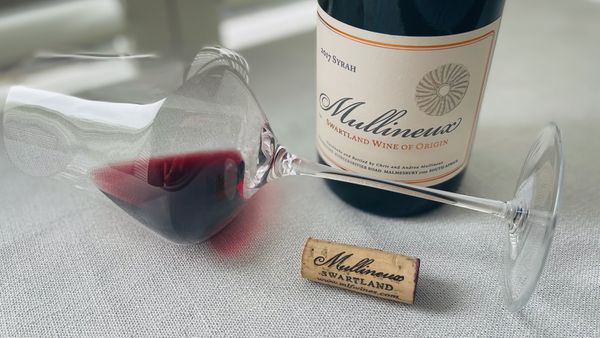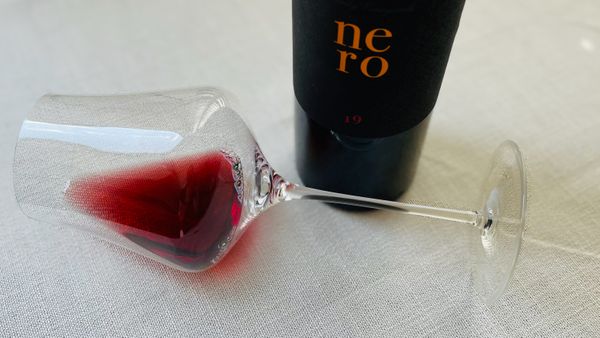Carignan
In my opinion Carignan is an extremely versatile wine that is sadly very underrepresented and overlooked in the South African wine market.
Short history
Carignan originated in Spain and is believed to have been named after a town in the Aragon province, called Cariñena. For a very long time Carignan was the most planted red grape varietal in France, until it was overtaken by Merlot at the end of the 20th century. Yet, most wine drinkers have never even heard of it!
During the 1970s Carignan was grossly over-planted in France. But why was this? The simple answer is yield. This grape varietal has an enormous yield regularly delivering around 200hl/ha, which is more than four times as much as, for example, Cabernet Sauvignon. This lead to Carignan having a bad reputation, as a lot of very bland Carignan wines were produced.
Today Carignan is planted in Algeria, Tunisia, Morocco, France, Spain, Italy, America and also South Africa.
Characteristics
This is rather difficult grape to grow because it needs a lot of care and attention, both on the vine and in the cellar. Due to the large, tight clusters and extremely long maturation cycle the grapes are prone to powdery mildew and bunch rot. To increase flavour concentration in the berries the vines also need poor, rocky soils and low rainfall in order to curb the yield and increase the quality. On the other hand, the varietal is extremely drought resistant and grows very well in desert conditions.
Carignan is naturally very high in tannins and acidity and is often used to add acidity to Tempranillo-based wines. It is a medium-bodied red wine and is similar to Zinfandel, Merlot and even Côte du Rhône blends.
A typical Carignan will display dominant flavours of dried cranberry, raspberry, liquorice, baking spices and cured meat. Carignan will pair well with poultry dishes that contain cranberries, roasted squash as well as dishes that contain baking spices — for all the American readers, this is an excellent wine for a traditional Thanksgiving dinner.
With the steady decline in numbers, encouraged by the EU grants to pull up vines, Carignan is slowly reaching new markets as wines produced from the remaining old vines that are fully ripened on infertile soils during warm summers are far better than their predecessors. The reason being that the yields are very restricted, which leads to enough ripe fruit character in the berries to mask the naturally high tannins and acidity.
Carignan in South Africa
Jancis Robinson names the Fairview Pegleg Carignan as one of the best in the world, and certainly ‘the most unusual example of Carignan thriving in the New World’.
The story behind the name (Pegleg) is just an enticing as the wine itself. Fairview sources the Carignan grapes from a farm in Perdeberg, and named its wine after the grape grower who, at the tender age of 17, lost his leg in an accident in the vineyard. He now has a wooden leg — pegleg.
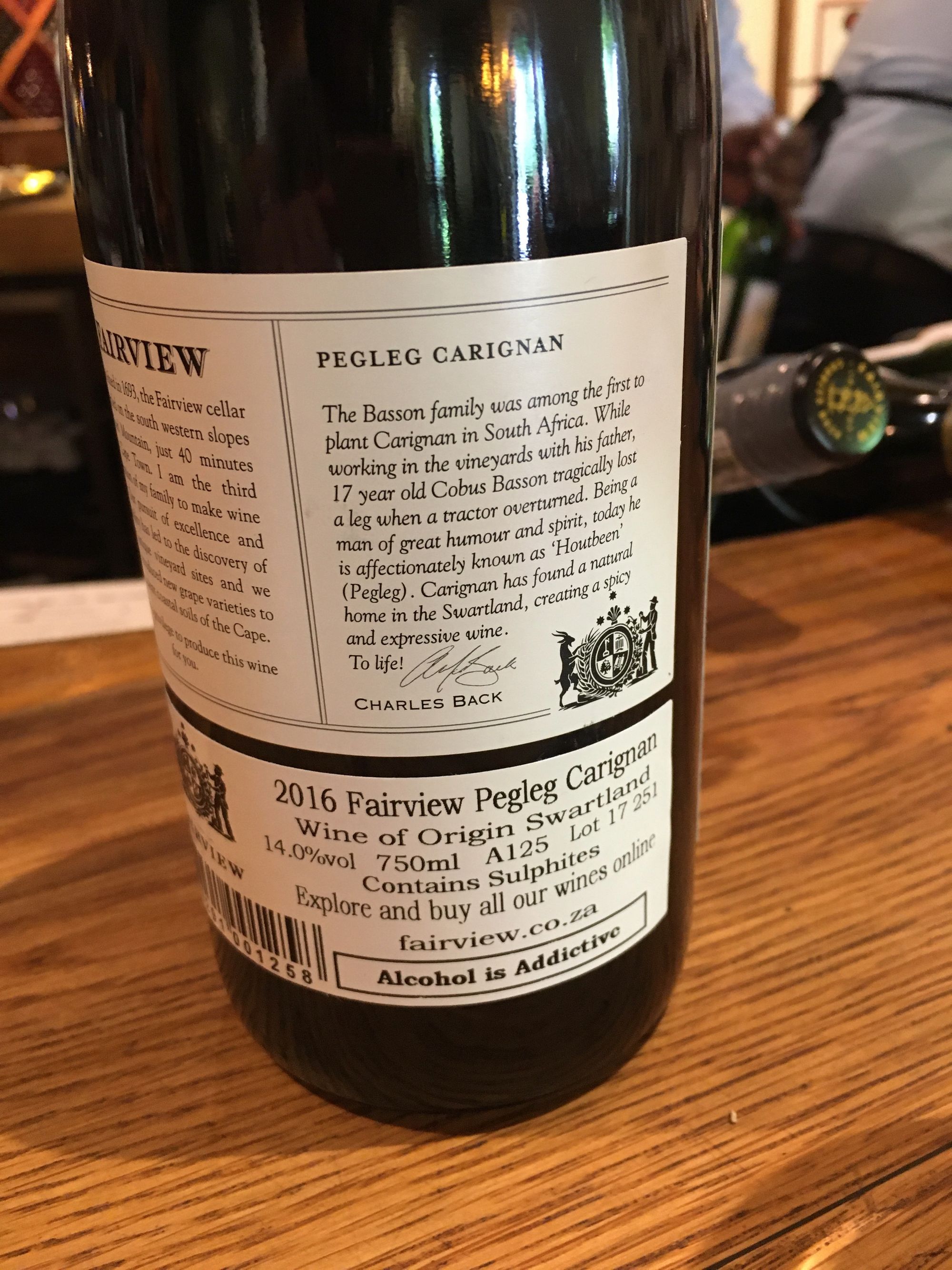
In order for us to enjoy the lovely wine that Fairview offers, the grapes go through a rather intense and manual process as Carignan grapes are not suited for mechanical harvesting.
The grapes are hand harvested and de-stalked, before being hand sorted and lightly crushed. Fermentation happens in steel tanks and the wine is pumped over frequently. The malolactic fermentation is completed in 2nd and 3rd fill French Oak barrels, where the wine is matured for another 15 months. After this, the wine is lightly filtered and bottled.
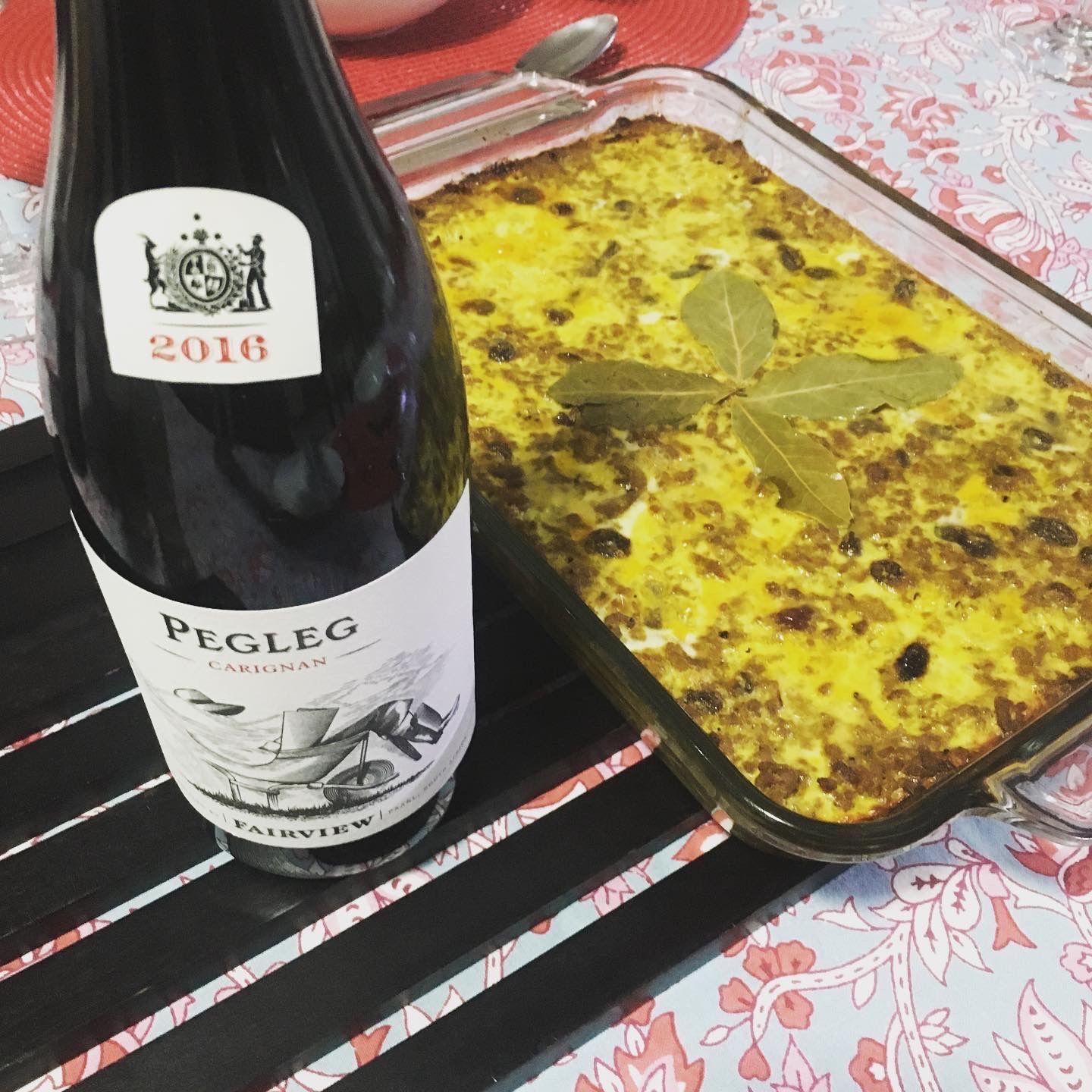
The Fairview Carignan has a beautiful, deep, ruby red colour. Aromas of fresh red fruits, spices and liquorice are prominent on the nose. The wine is medium-bodied with a slight acidity that is typical of Carignan; you will also taste red fruits, cranberry, liquorice and white pepper.
Carignan pairs well with most foods, but is a great companion to spicier foods which is why I decided to add it to the table when I made Bobotie. It was lovely!
Thanks for reading! I hope you will give Carignan a try.
Follow The Wine Dream on Instagram for more photos and tasting notes.


